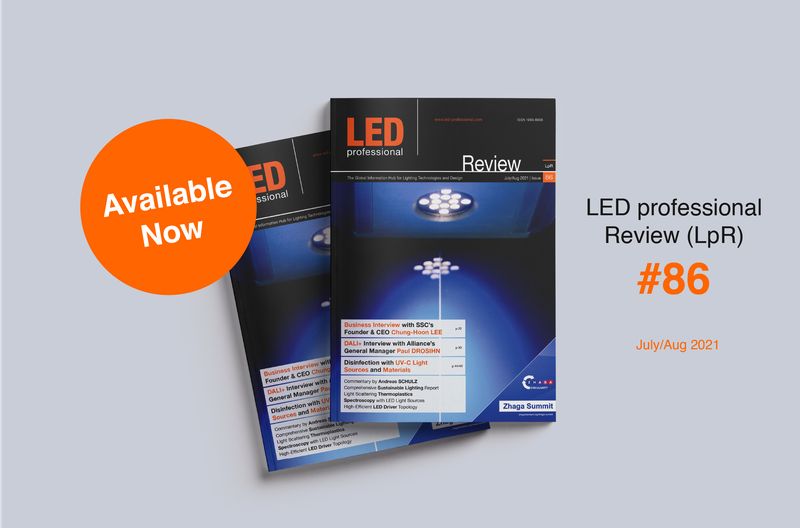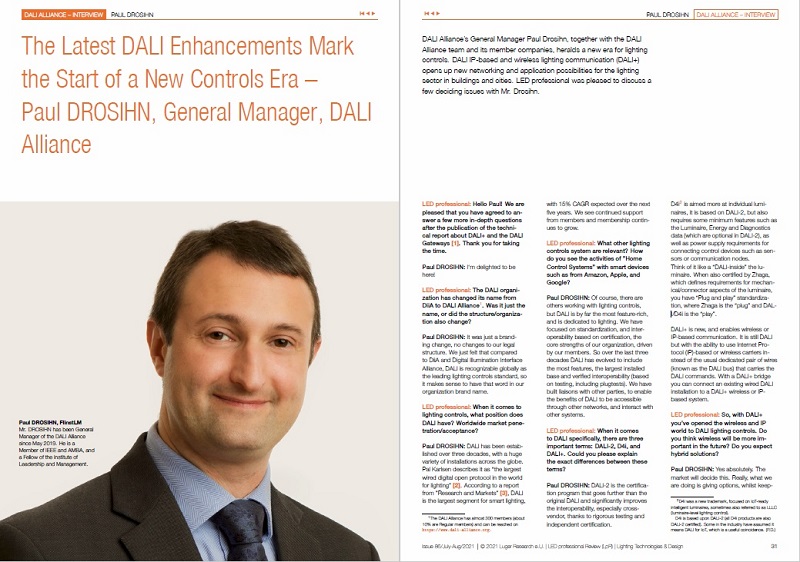




August 2, 2021
 The latest issue of LED Professional contains an interview with Paul Drosihn, General Manager of the DALI Alliance, which discusses the new networking and application possibilities for the lighting sector in buildings and cities that are enabled by DALI IP-based and wireless lighting communication.
The latest issue of LED Professional contains an interview with Paul Drosihn, General Manager of the DALI Alliance, which discusses the new networking and application possibilities for the lighting sector in buildings and cities that are enabled by DALI IP-based and wireless lighting communication.
| >> Download the latest issue (July/August 2021, issue 86) of LED Professional |
LED professional: Hello Paul! We are pleased that you have agreed to answer a few more in-depth questions after the publication of the technical report about DALI+ and the DALI Gateways [1]. Thank you for taking the time.
Paul DROSIHN: I‘m delighted to be here!
LED professional: The DALI organization has changed its name from DiiA to DALI Alliance. Was it just the name, or did the structure/organization also change?
Paul DROSIHN: It was just a branding change, no changes to our legal structure. We just felt that compared to DiiA and Digital Illumination Interface Alliance, DALI is recognizable globally as the leading lighting controls standard, so it makes sense to have that word in our organization brand name.
LED professional: When it comes to lighting controls, what position does DALI have? Worldwide market penetration/ acceptance?
Paul DROSIHN: DALI has been established over three decades, with a huge variety of installations across the globe. Pal Karlsen describes it as “the largest wired digital open protocol in the world for lighting” [2]. According to a report from ”Research and Markets” [3], DALI is the largest segment for smart lighting, with 15% CAGR expected over the next five years. We see continued support from members, and membership continues to grow.
 LED professional: What other lighting controls system are relevant? How do you see the activities of ”Home Control Systems” with smart devices such as from Amazon, Apple, and Google?
LED professional: What other lighting controls system are relevant? How do you see the activities of ”Home Control Systems” with smart devices such as from Amazon, Apple, and Google?
Paul DROSIHN: Of course, there are others working with lighting controls, but DALI is by far the most feature-rich, and is dedicated to lighting. We have focused on standardization, and interoperability based on certification, the core strengths of our organization, driven by our members. So over the last three decades DALI has evolved to include the most features, the largest installed base and verified interoperability (based on testing, including plugfests). We have built liaisons with other parties, to enable the benefits of DALI to be accessible through other networks, and interact with other systems.
LED professional: When it comes to DALI specifically, there are three important terms: DALI-2, D4i, and DALI+. Could you please explain the exact differences between these terms?
Paul DROSIHN: DALI-2 is the certification program that goes further than the original DALI and significantly improves interoperability, especially cross-vendor, thanks to rigorous testing and independent certification. D4i is aimed more at individual luminaires, and is based on DALI-2 (all D4i products are also DALI-2 certified). But D4i also requires some minimum features such as the Luminaire, Energy and Diagnostics data (which are optional in DALI-2), as well as power supply requirements for connecting control devices such as sensors or communication nodes. Think of it like “DALI-inside” the luminaire. When also certified by Zhaga, which defines requirements for mechanical/ connector aspects of the luminaire, you have “Plug and play” standardization, where Zhaga is the “plug” and D4i is the “play”. DALI+ is new, and enables wireless or IP-based communication. It is still DALI but with the ability to use Internet Protocol (IP)-based or wireless carriers instead of the usual dedicated pair of wires (known as the DALI bus) that carries the DALI commands. With a DALI+ bridge you can connect an existing wired DALI installation to a DALI+ wireless or IP-based system.
LED professional: So, with DALI+ you’ve opened the wireless and IP world to DALI lighting controls. Do you think wireless will be more important in the future? Do you expect hybrid solutions?
Paul DROSIHN: Yes absolutely. The market will decide this. Really, what we are doing is giving options, whilst keeping the standardized behavior and interoperability backed by certification. We already see “wireless” being important; our members requested this as a priority. I’m sure there will always be wired controls, and wired gives many advantages, particularly as for the foreseeable future you will always need power to a luminaire. However, we do see wireless as particularly strong for retrofit, for historical buildings for example. Wireless is also very useful to add flexibility to spaces, particularly for sensors or controls, as spaces need to become more dynamic, with offices changing to hot-desking, or using more conference rooms or other types of use. So in reality we do expect hybrid to become the norm, and the market will decide the mix, differing by application or individual project requirements.
LED professional: What are the main advantages of pure systems such as wired-only or wireless-only?
Paul DROSIHN: This depends deeply on the application. Wired systems offer predictable network behavior, and avoid any potential connectivity issues that may arise in a built environment. Also, DALI wiring can be installed along with the power cables. One advantage of wireless is flexibility; it can be much easier to add sensors and new luminaires to an existing lighting network, or to relocate devices when a building is refurbished or repurposed. Not needing to lay data cables through walls, ceilings or floors can be a considerable advantage in time and expense. (But of course luminaires and other lighting devices still require power.) An additional advantage of wireless specific to DALI+ is increased addressing, indeed with IP-based that’s almost unlimited.
LED professional: Which wireless network does DALI+ support?
Paul DROSIHN: Currently we are working with Thread, a low-power wireless mesh networking protocol based on the universally supported IP and built using open and proven standards. DALI+ with Thread will be the first certification program, and further DALI+ certification programs utilizing carriers other than Thread are expected to follow soon. In addition to Thread, our new DALI+ specification already supports Ethernet, Wi-Fi and other IP-based protocols.
LED professional: Are there any new data/functions/commands in DALI+?
Paul DROSIHN: DALI+ uses the same DALI commands throughout, so you get the same lighting control features and data, the main difference is the carrier. However, a key potential advantage of DALI+ is the addressing, which goes beyond the 64+64 per DALI wired subnet. For IP-based DALI+ with Thread, this will be almost limitless, making it easier to install and manage large networks.
LED professional: The first version of this specification supports IP-based protocols such as Thread, Ethernet, and Wi-Fi. But the main focus is given to Thread. Why is that?
Paul DROSIHN: All our work on specifications and certification is guided by the priorities set by our members, as well as the availability of volunteers to carry out the necessary tasks; these include creating the specifications and test procedures, and evaluating the tests so that certification can begin. For DALI+, our members decided that the highest priority was to work with the Thread Group to develop a robust DALI+ with Thread certification program. Once this work is complete, it should provide the basis to develop further certification programs with other carriers. And, future versions of the DALI+ specification may support other carriers as well.
LED professional: Besides DALI+, there are also two DALI Gateways available for Bluetooth mesh and Zigbee. What’s the difference between DALI+ and DALI Gateways?
Paul DROSIHN: Gateways translate or map the behavior from the other network to DALI, so a DALI device can be added to a Bluetooth or Zigbee network, using a gateway. But with gateways the control is from the network side. DALI+ talks DALI everywhere, without translation or mapping, everything is DALI, regardless of the carrier, so the only thing to take care of is to make sure a compatible carrier is used throughout.
LED professional: Security is always key. The risk of hacking DALI+ systems and getting into companies’ networks is fundamental, and of course, you’ve considered that. How secure are the DALI+ systems and what about the gateway security?
Paul DROSIHN: Gateways rely upon security features of the wireless network on the wireless side, and wired DALI on the DALI side. DALI+ uses security layers provided by the underlying protocol, with additional application-layer security features for DALI+ with Thread. We have working liaisons with the relevant partners, Bluetooth SiG, Zigbee Alliance (now Connectivity Standards Alliance) and Thread Group, and our technical teams work with those partners.
LED professional: Where exactly will manufacturers find the specifications of DALI+ and the DALI Gateways? Which standards will be updated for DALI+ and the Gateways? Can you give us a quick roll-out of what will come?
Paul DROSIHN: The specifications for the wireless to DALI gateways are Part 341 Bluetooth mesh to DALI, and Part 342 Zigbee to DALI. These will be transferred to IEC 62386 in due course. The DALI+ specification is an update to the already published Part 104, with changes and additions. These are already published on our website and available to our members. They are also available to non-members on our website with a simple email sign-up. As mentioned, work is in progress on the tests for certification.
LED professional: With DALI+, D4i, and DALI-2 there is a powerful lighting control system available. Do you see the development of DALI finished, or are there any plans for further extensions and upgrades?
Paul DROSIHN: Firstly, we must deliver on the certification programs for specifications, including gateways and DALI+ as well as features such as DALI emergency and color control. As certified products become more widely available, lighting designers, architects, facility maintenance teams and downstream DALI users will all benefit from further project innovation. Looking further ahead, we see opportunities for industry harmonization and convergence in currently isolated building systems such as HVAC, lighting, security and IT. That’s why we recently joined IP-BLiS, the ‘IP Building & Lighting Standards’ market interest group, which promotes alignment around IP-based networks for enhanced building control and management. With extensive data from DALI sensors and controllers, there are clear opportunities to better connect with other building systems. Of course, all this will be while maintaining our continued core focus on interoperability and future-proofing through globally recognized standardization and certification.
LED professional: With integrated lighting, meaning for visible and nonvisible effects and its usage, we enter a new area. Would this also include controls? Are you thinking in this direction as well?
Paul DROSIHN: I think technology will enable new, unexpected or previously unthought of, concepts: that’s what technology does. A favorite quote of mine is from Henry Ford, who said, “If I had asked people what they wanted, they would have said faster horses”. Once technology is enabled, the market will decide what it wants and the DALI Alliance will ensure we keep in tune with that, while continuing to focus on “standardized and interoperable” that is our core value. I think that with gateways enabling luminaire-level controls and sensing, and with DALI+ enabling alternative carriers, these possibilities expand very quickly.
LED professional: What are your strategic goals for the further development of DALI and the DALI Alliance?
Paul DROSIHN: To get closer to our market. What I mean is to listen more to those that interact with DALI, at all levels, and try to be more responsive to their needs. However, we are a standards organization, and rely heavily on the support of our members, especially our Regular members. Therefore, a key challenge is to ensure that we not only grow membership, but also grow the contribution of our members to the Alliance. Finally, I see a connected, data-rich world, but it’s a bit fragmented or siloed at present. I can see even more opportunities to reduce energy consumption and improve environmental conditions. “LEDification” enabled massive energy savings, and more control, especially dimming. In turn this enabled further energy usage reductions. Sensing went further still and intelligence is adding a new dimension. Lighting control and sensing will become even more connected and harmonized across segments, enabling us to go even further still. The DALI Alliance must do everything it possibly can to make that journey as fast and as smooth as possible.
LED professional: Paul, that was an excellent outlook. Thank you so much for taking the time to talk to us. I hope we can meet in person again soon.
Paul DROSIHN: Thank you very much for the opportunity.
References
[1] LpR85 May/June 2021, https://www.led-professional.com/lpr-magazine
[2] LpR79 May/June 2020, https://www.led-professional.com/lpr-magazine
[3] Market Research https://www.businesswire.com/news/home/20200226005519/en/Global- Smart-Lighting-Market-2019-to-2026